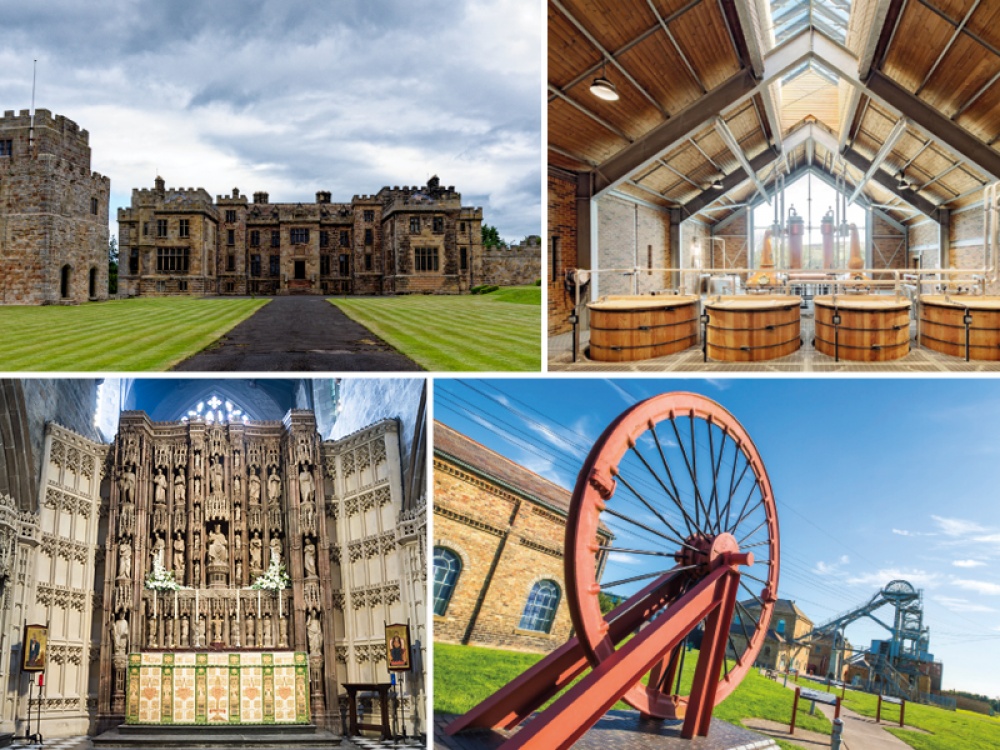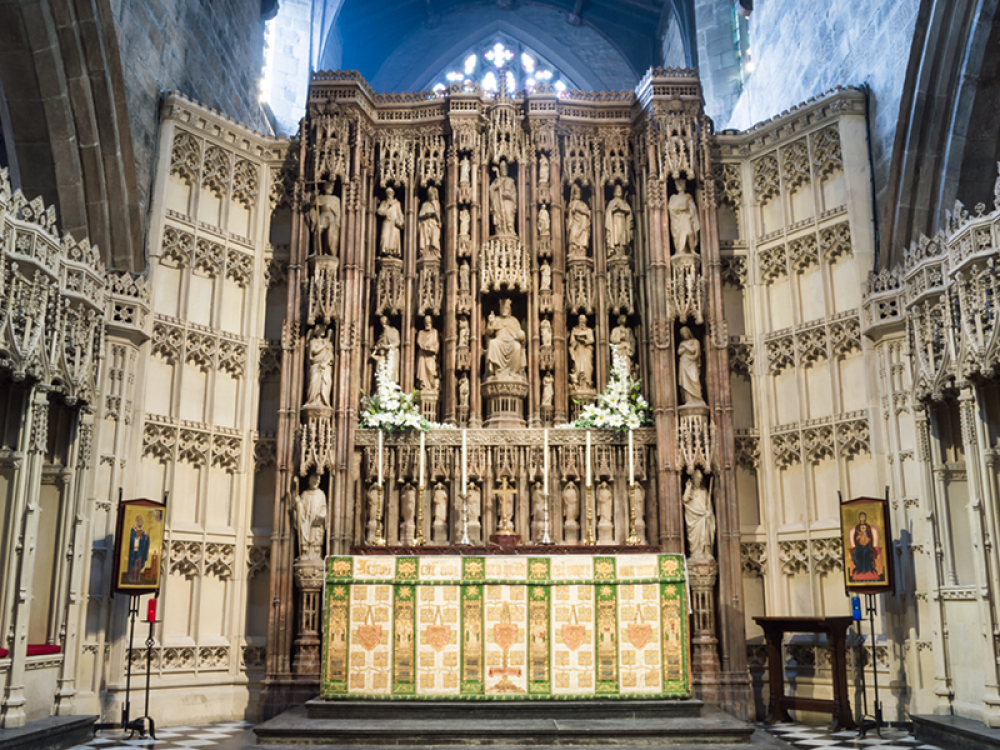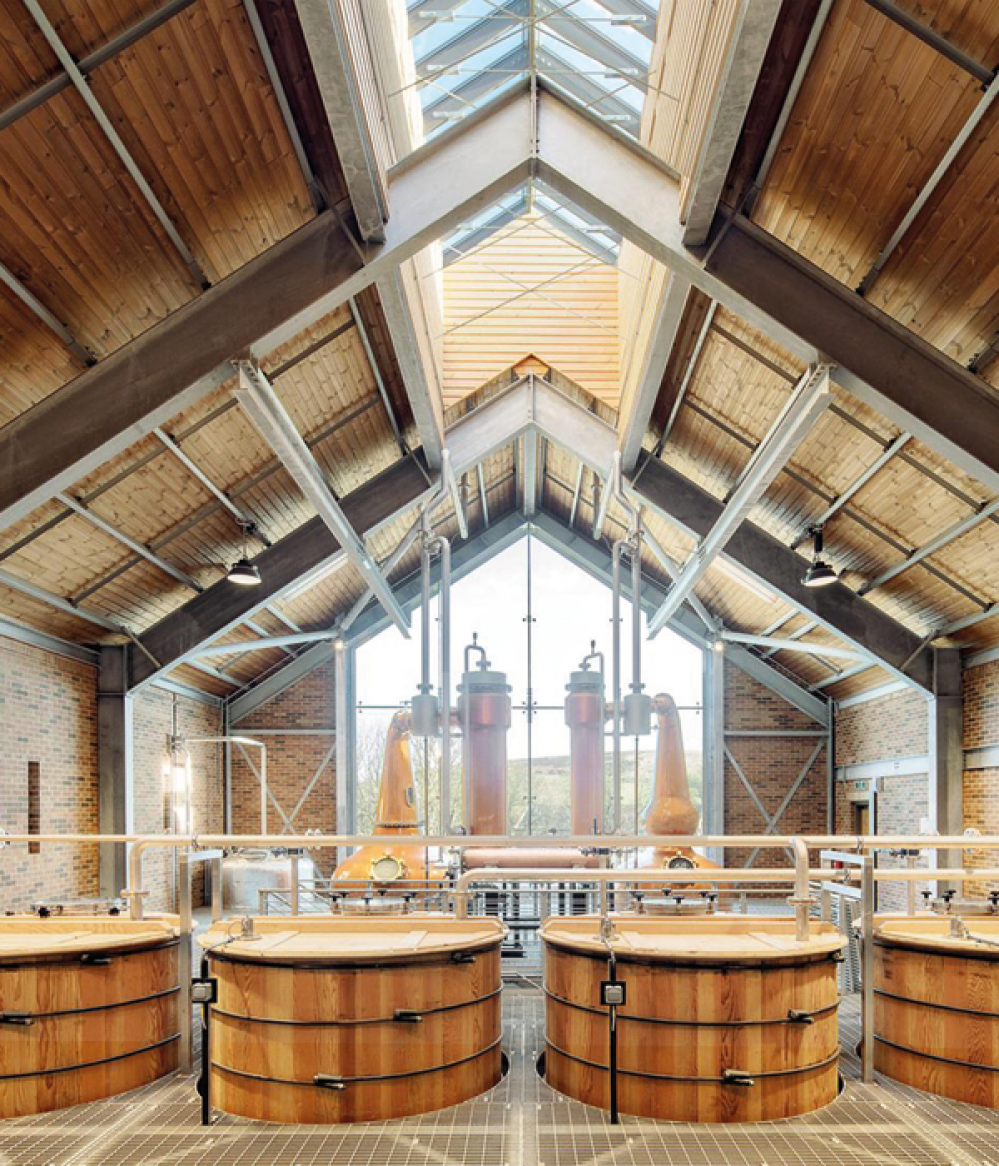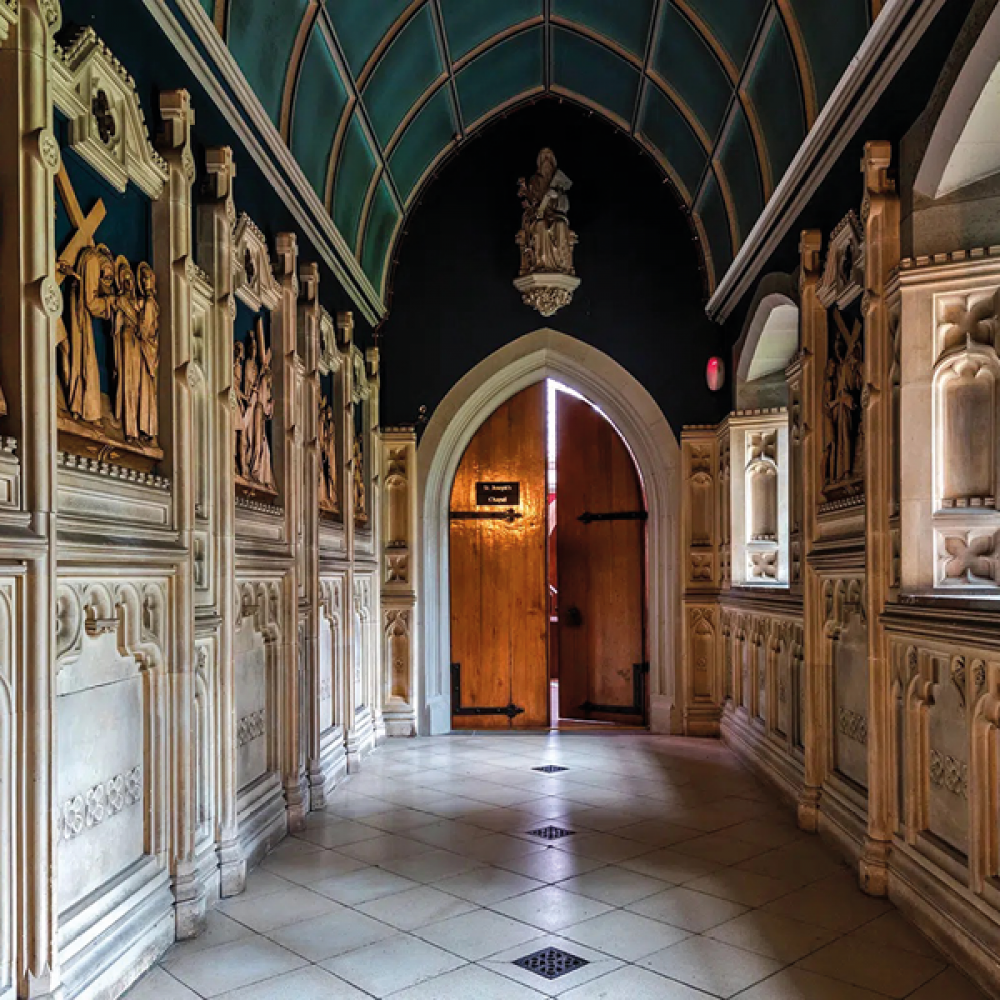Top Places to Visit Across the North East for a Cultural Day Out

Whether you're a history buff or simply want to learn more about the North East, let us plan your next day out

Cragside
Budding inventors, take note. Visit Cragside (dubbed Britain’s original smart home) and you can learn all about engineer, innovator and arms manufacturer Lord Armstrong at his former home – the first in the world to be lit by hydroelectricity. Discover just some of Armstrong’s experiments before heading outside to the gardens and the Orchard House, one of the country’s largest surviving glasshouses, dating back to the 1870s. There are plenty of trails and pathways to take you through the fascinating grounds too.
Rothbury, Morpeth NE65 7PX
01669 620333
nationaltrust.org.uk
Beamish: The Living Museum of the North
Inspired by the open-air museums of Scandinavia, Beamish was the brainchild of Frank Atkinson who moved to the region in the late 1950s. He saw a unique way of life here which he felt could disappear so he set about collecting culture in as many ways as he could. This open-air museum has been built using objects, images and stories donated by local people to create an archive of North East life covering the past two centuries. Remaking Beamish is a new project bringing a new era to the museum – the biggest development in the museum’s history. This includes 25 new exhibits and attractions with a 1950s Town and Farm. There’s so much to see and do right across Beamish: head to the recreation ground for a spot of miniature golf, take a ride on a bus or a tram or pop into the replica home of famous North East artist Norman Cornish. Don’t miss a trip to the iconic sweetshop in The 1900s Town. Read more about Beamish’s iconic tramway and Remaking Beamish at livingnorth.com.
Beamish DH9 0RG
beamish.org.uk
Chillingham Castle
This 13th century, Grade I*-listed stronghold in Northumberland is famed for its ghosts – beware, it’s Britain’s most haunted historic castle. The torture chamber and evening ghost tours will entertain anyone who’s up for a fright, but the castle’s majestic rooms, gardens, lakes, fountains and tearooms mean it’s the perfect day out for all the family. Throughout the centuries, the castle’s architectural details and walls have remained unchanged so it’s full of character. Marvel at the Great Hall, see the impressive weapons in the Armoury and find fascinating family memorabilia and furnishings in The Plaque Room Library, before refuelling in the tearoom and taking a stroll in the beautifully-kept gardens. There’s so much to see you might want to stay the night; each of the self-catering apartments here has its own individual character.
Chillingham, Alnwick NE66 5NJ
01668 215359
chillingham-castle.com
Read More: Author LJ Ross Is Honoured to Unveil the Caroline Herschel Turret at Kielder Observatory

Newcastle Cathedral
Formally the Cathedral Church of St Nicholas, Newcastle Cathedral is the most northerly diocese of the Anglican Church in England and was founded in 1091, around the same time as its neighbouring castle. Originally a parish church, it was destroyed by fire in 1216 and the current structure was completed in 1350. The cathedral’s iconic and unusual lantern spire was constructed in 1448, during the reign of Henry VI. Today, the cathedral hosts a variety of events and activities throughout the year and its monuments, stained-glass windows and ledger stones tell the stories of the city’s heritage (volunteer guides offer tours about these). This summer, don’t miss the Shaun the Sheep on the Tyne art trail, the cathedral’s ‘by candlelight’ performances, organ recitals and even a 90s silent disco. Why not climb the 162 steps of Newcastle Cathedral’s iconic Lantern Tower for unrivalled views of the city? We did, and you can read all about it at livingnorth.com.
St Nicholas Square, Newcastle NE1 1PF
0191 232 1939
newcastlecathedral.org.uk
Tanfield Railway
All aboard! First laid down more than a quarter of a century before the first railway was officially sanctioned by government, more than 75 years before the first steam locomotive and 100 years earlier than the Stockton and Darlington Railway, travel back in time on the world’s oldest railway. When the Tanfield Railway (or waggonway, as it was known at the time) was built in 1725, it was a triumph of engineering – a clear signal that a new industrial age was upon the world. Today, you can enjoy a six-mile round trip through rolling countryside and make the most of regular special events.
Hill Engine Shed, Gateshead NE16 5ET
07508 092365
tanfield-railway.co.uk
Alnwick Castle
The second-largest inhabited castle in the UK, Alnwick Castle has been home to the Duke of Northumberland’s family, the Percys, for more than 700 years. It has served as a military outpost, a teaching college, a refuge for evacuees, and, of course, a family home and today it plays host to outdoor theatre shows and longbow demonstrations alongside many more unique events. The castle is also an iconic film set; it featured in Transformers: The Last Knight, and as Brancaster Castle in Downton Abbey’s 2015 and 2016 Christmas specials. Most famously, it was Hogwarts School of Witchcraft and Wizardry in the first two Harry Potter films. Inside the castle you’ll see an outstanding collection of paintings and furniture by important 17th, 18th and 19th century cabinetmakers. Outside, don’t miss the Three Inch Fools’ performances of As You Like It (30th June) and Robin Hood (1st July) this summer.
Alnwick NE66 1NQ
01665 511100
alnwickcastle.com
Read More: Comedy Nights and Gigs to Book Across Yorkshire

Woodhorn Museum
Depicting the lives of coal miners, this former colliery retains some of its original buildings and equipment including two head frames, a steam winding engine, and a blacksmith’s and joiner’s shop. This summer, experience the world of the Pitmen Painters, the famous amateur art group from Ashington, through their collection, or explore Coal Town, an engaging and interactive permanent exhibition where you’ll set off walking to work in 1918, and as the decades fly by you’ll encounter some fascinating folk.
Queen Elizabeth II Country Park, Ashington NE63 9YF
01670 624455
museumsnorthumberland.org.uk
Bamburgh Castle
There aren’t many more dramatic backdrops than Bamburgh Castle. Still one of the largest inhabited castles in the country, way back in Anglo-Saxon times it’s believed that it was one of the most important places in all of England. As you’d expect of a site which has had settlements on it since 10,000BC, there are lots of fascinating stories and legends to discover here, including dragons and ghosts. Arguably most the remarkable is the story of engineer Lord Armstrong, who bought the castle in the 19th century. Dogs are welcome inside the castle grounds, Armstrong & Aviation Museum, Tack Room Café and Victorian Stables Bar. You can spend the whole day exploring Bamburgh Castle, but make sure you leave a little time for a stroll along the beach beneath.
Bamburgh NE69 7DF
01668 214208
bamburghcastle.com
Berwick Barracks and Main Guard
Built in the early 18th century to the design of architect Nicholas Hawksmoor, Berwick Barracks was among the first in England to be purpose-built. Here you’ll find the permanent exhibition By Beat Of Drum which offers an insight into the life of British soldiers from the Civil War to the First World War. While you’re there, take a stroll to The King’s Own Scottish Borderers Museum which boasts an unrivalled collection of memorabilia from the regiment’s 325-year history, and for your culture fix don’t miss the Berwick Gymnasium Art Gallery and the Berwick Museum and Art Gallery.
Parade, Berwick TD15 1DF
0370 333 1181
english-heritage.org.uk
Read More: Six New Novels to Read Now

Seaton Delaval Hall
This 18th century hall was once home to the larger than life Delaval family and is in keeping with the Georgian architectural style. A place of great theatricality, drama and mischief, the Grade I-listed mansion hosted many fabulous parties in its past, and an extravagant lifestyle gave the family their nickname of the ‘gay Delavals’. Despite the hall being almost completely destroyed by a devastating fire in 1822, the property has recently undergone extensive restoration both inside and to the surrounding grounds. The remaining central block offers a unique opportunity to explore the surviving architecture and it’s well worth looking up from the bottom of the iconic 18th century cantilever stairs. In the west wing visitors can meet the Delaval family though the hall’s portraits, and the impressive gardens offer a beautiful place to unwind.
The Avenue, Seaton Sluice NE26 4QR
0191 237 9100
nationaltrust.org.uk/seaton-delaval-hall
RNLI Grace Darling Museum
In September 1838, 22-year-old Grace Darling and her father rowed a mile out to sea in the middle of a storm to rescue survivors from the stricken steamship SS Forfarshire in a rickety-looking wooden boat. Grace kept the coble steady as her father helped rescue four men and a woman. This museum celebrates the heroic and historic rescue, and her life. Sadly Grace died of tuberculosis aged just 26 and is buried in Bamburgh’s churchyard. Read more about her story, and why it’s still so important today, at livingnorth.com.
Radcliffe Road, Bamburgh NE69 7AE
01668 214910
rnli.org
Housesteads Roman Fort
Completed in 138AD, this is the most complete Roman fort in the country and was once home to nearly 10,000 soldiers – their history is encapsulated in the amazing exhibits. Find out how the Romans built the fort as well as the vicus, a civilian settlement which developed in its shadow. Housesteads even boasts the oldest communal toilets and hospital you’re ever likely to visit – but our highlight is admiring the panoramic views from this ancient fortress, or the walk to the famous Sycamore Gap.
Haydon Bridge NE47 6NN
01434 344363
english-heritage.org.uk

Ford and Etal
With a history dating back to the Norman conquest, there’s loads to see and do here: Pre-Raphaelite paintings at Lady Waterford Hall; the medieval Etal Castle, built by Robert Manners as a defence against Scottish raiders in the 14th century and which fell to James IV’s invading Scots army in 1513 before their defeat at the Battle of Flodden; the Heatherslaw Light Railway; and the traditional corn mill at Heatherslaw, which still mills its own flour. The historic Flodden Battlefield is where, in September 1513, the bloody but decisive battle in the long war between England and Scotland took place. More than 15,000 of the (roughly) 60,000 soldiers who fought here, died, including King James IV – the last British monarch to meet his end in battle. As you survey the battlefield you can feel the history in the air.
Cornhill-on-Tweed TD12 4JT
01890 820338
ford-and-etal.co.uk
Gibside
Gibside’s stunning 18th century landscaped gardens are popular with visitors of all ages. You can explore themed gardens, woodland walks and a neo-classical chapel. Take in the views of the Derwent Valley and restored stable block, then let the kids run wild at the Strawberry Castle Play Area, before refuelling with a drink and bite to eat at the Gibside Café or Stables Carriage House Coffee Shop.
Near Rowlands Gill, Gateshead NE16 6BG
01207 541820
nationaltrust.org.uk

Ad Gefrin
Wooler’s £16 million Anglo-Saxon museum and whisky distillery is finally open. Bringing life to the largely untold story of the Anglo-Saxon kings and queens of the ‘golden age’ of Northumbria, (whose royal palace at Yeavering, just outside Wooler, once attracted visitors from all over Europe, Scandinavia and as far away as North Africa) the museum offers an immersive experience and displays rare and never before seen artefacts. The recreation of the Great Hall of the Royal Summer Palace is one of the many highlights, as well as the distillery tours where you can see the vast copper stills producing the first Northumbrian single malt whisky.
South Road, Wooler NE71 6NJ
01668 281554
adgefrin.co.uk
Arbeia South Shields Roman Fort
Once guarding the main sea route to Hadrian’s Wall, at Arbeia South Shields Roman Fort, you’ll immerse yourself in life in Roman Britain with full-scale reconstructions of the Roman fort, including the West Gate. Find out all about the home of the Commanding Officer and who he lived with, where the soldiers based at Arbeia would have lived, cooked and kept their equipment, and make the most of the free guided tours. There are also a range of live performances taking place here throughout the summer as well as a display of skill and horsemanship from The Roman Cavalry display team.
Baring Street, South Shields NE33 2BB
0191 277 1409
arbeiaromanfort.org.uk
Roker Pier and Lighthouse
Sunderland’s busy harbour was transformed when a 1000ft-long pier was completed in 1730. In the 1780s, work began on the construction of the 700ft-long North Pier which was completed 10 years later. Then, in 1803, Sunderland’s first lighthouse was built to replace the old reflector light on the end of the North Pier. By the late 19th century, local engineer Henry Wake proposed the construction of a new outer harbour with two curving piers and the New North Pier (better known as Roker Pier). The lighthouse at Roker Pier has always been an operating lighthouse, and still is today. In 2012, extensive restoration began and today visitors can take a tour of the pier and learn more about its history, then look out across the sea from the top of the lighthouse.
Sunderland SR6 0PL
rokerpier.co.uk
Gibside
Gibside’s stunning 18th century landscaped gardens are popular with visitors of all ages. You can explore themed gardens, woodland walks and a neo-classical chapel. Take in the views of the Derwent Valley and restored stable block, then let the kids run wild at the Strawberry Castle Play Area, before refuelling with a drink and bite to eat at the Gibside Café or Stables Carriage House Coffee Shop.
Near Rowlands Gill, Gateshead NE16 6BG
01207 541820
nationaltrust.org.uk
Read More: 10 Luxurious Seaside Breaks to Book Across the UK

Auckland Castle
Once home to the Prince Bishops of Durham, visitors can discover almost 1,000 years of history within Auckland Castle, positioned high above the River Wear. The Castle recently reopened after undergoing major conservation work, which has transformed its state rooms. Marvel at the majestic Throne Room and admire the impressive Long Dining Room before viewing the 13 life-size figures painted by Francisco de Zurbarán – icons of the Spanish Golden Age. These paintings were bought by Bishop Trevor in 1756 and have hung in the Long Dining Room ever since. If you’re into art, don’t miss Sin: The Art of Transgression on display at the castle from 17th June – an exhibition of paintings from the National Gallery’s collection as well as works on loan by Tracey Emin and Ron Mueck.
Market Place, Bishop Auckland DL14 7NR
aucklandproject.org
Captain Cook Birthplace Museum
The Captain Cook Birthplace Museum opened on the 28th October 1978 – the 250th anniversary of Captain Cook’s birth. One of the most esteemed explorers in the world, he was born in the North East, in Marton to be precise. You can see some of his personal possessions and memorabilia here, and his life is remembered in six themed permanent displays with original artefacts. Visitors will learn plenty about his voyages and the people and cultures he encountered along the way.
Stewart Park, Marton TS7 8AT
01642 311211
teesvalleymuseums.org
Saltburn Cliff Tramway & Pier
In 1861 the Stockton and Darlington Railway arrived in Saltburn from Redcar and brought with it an influx of seaside-goers, and the need for new projects, including Saltburn Pier which was completed in 1869. Now the oldest water-balanced funicular still in operation in Britain (and one of the oldest in the world), linking the Victorian town of Saltburn with the only remaining pleasure pier on the whole of the North East and Yorkshire coast, Saltburn Cliff Tramway is an adored tourist attraction on our stretch of the coast.
Saltburn TS12 1HQ
redcarcleveland.co.uk
Read More: Perfect Self-Catering Stays in the North East for a Relaxing Retreat

Ushaw: Historic House, Chapels & Gardens
Henry VIII and Elizabeth I swapped Roman Catholicism for their new Church of England. Meanwhile, the forefathers of Ushaw spent 300 years living in Northern France. Forced out by the French Revolution, they set sail back to England looking for a new home. Near Ushaw Moor they bought land and built this historic house, chapels and gardens and created a school for priests. But, afraid of a reaction from anti-Catholics, they planted a row of beech trees disguising its true purpose. Ushaw expanded over the years and today you can take a tour through the corridors, chapels and cloisters. Various events take place throughout the year here and this summer you mustn’t miss Macbeth on 8th July (part of Durham Shakespeare Festival) and the Ushaw Viking Takeover on 26th August.
near Durham City DH7 7DW
ushaw.org
National Museum of the Royal Navy Hartlepool
The National Museum of the Royal Navy in Hartlepool will take you on a voyage to an authentic 18th century seaport to discover the spectacular HMS Trincomalee – the last remaining Royal Navy ship to be built in India. This museum tells the story as you’re taken back to the Bronze Age, and there’s plenty to discover – including how tradesmen (like tailors, printers and instrument makers) earned a wage and spent their free time.
Jackson Dock, Maritime Avenue, Hartlepool TS24 0XZ
01429 860077
nmrn.org.uk
Barnard Castle
Barnard Castle was built to control a river crossing between the Bishop of Durham’s territory and the Honour of Richmond. Much of the castle we see today was built during the 12th and early 13th centuries by the Balliol family. In a siege in 1569 the castle was bombarded, and by the early 17th century it was abandoned. Today, visitors take strolls around its ruins on their visit to the market town to learn all about its history.
Flatts Road, Scar Top, Barnard Castle DL12 8PR
english-heritage.org.uk











